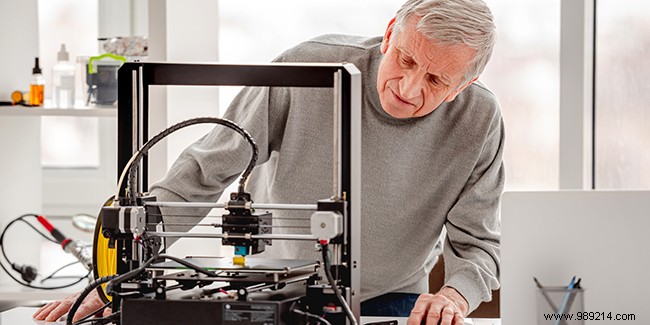
A Fab Lab is a separate, shared place where you can benefit from support to bring your projects to life. A charter exists and regulates access to and use of a Fab Lab. It was created by the Massachusetts Institute of Technology (MIT) and concerns all manufacturing laboratories in the world. What is a Fab Lab? What can we do there? How to access it? Answers!
The Fab Lab is short for fabrication laboratory , or "manufacturing laboratory" in French. The concept was born in the 1990s in the United States, at the prestigious MIT. Originally, there is a professor named Neil Gershenfeld. According to him, when people have access to technology, they can be creative and productive. Several courses are offered at the Massachusetts Institute of Technology on the theme:
In France, the first Fab Labs were created in 2009 in the city of Toulouse thanks to the Artilect FabLab Ping, Nybi.cc and Net-iki. Other Fab Labs were created afterwards. This is the case of the University of Cergy-Pontoise, Rennes, Lannion and Montpellier.
A Fab Lab is therefore a manufacturing laboratory. This atypical place is open to everyone, to researchers as well as to the general public. In the vast majority of cases, a Fab Lab is used by:
All generations are represented. It is not necessary to have specific diplomas to access these manufacturing laboratories. Users arrive with a concept. They can then create a prototype and submit their work.
A Fab Lab brings together different profiles. It is a real space for meeting, sharing and collaboration. It is possible to manufacture or repair all kinds of objects there, whether for everyday life or for a very specific use.
As we have already specified, all Fab Labs are subject to a single charter issued by MIT. Remember that these manufacturing laboratories all operate on the same model. They belong to a global network. That is why they share a set of abilities to make any object and therefore carry out a project.
The assistance found in a Fab Lab can take different forms. It can be:
Anyone can have access to a Fab Lab. These manufacturing labs are considered a community resource. It is not uncommon, however, that people wish to use these structures within the framework of a specific program. Users must participate in the operation. They must ensure the proper functioning of the laboratory by participating in cleaning, management and improvement. In addition, they must undertake not to damage the equipment at their disposal and of course not to endanger other people who use the Fab Lab. A contribution in terms of documentation and knowledge is also requested.
Each year, many projects are carried out in the manufacturing laboratories. All inventions, innovations, designs or processes developed in a Fab Lab are the property of the inventors. On the other hand, the latter must make them available to other users to possibly help them in their creation process.
It is possible for companies to use a Fab Lab to produce a prototype via a 3D printer. However, because their status is different, they must undertake not to interfere with the proper functioning of the laboratory and above all, to help other users. Like them, they must ensure that the Fab Lab evolves.
A Fab Lab is open to everyone and therefore to seniors. Their participation is often very appreciated because they have a different and therefore very useful knowledge. In manufacturing laboratories, it is not uncommon for people to work on innovations aimed at improving the daily lives of seniors. They can therefore give their opinion and help creators to optimize their innovations.
Out of curiosity, to grow, to continue learning, to share knowledge... All seniors have a good reason to use a Fab Lab. Find out which structure is closest to you.